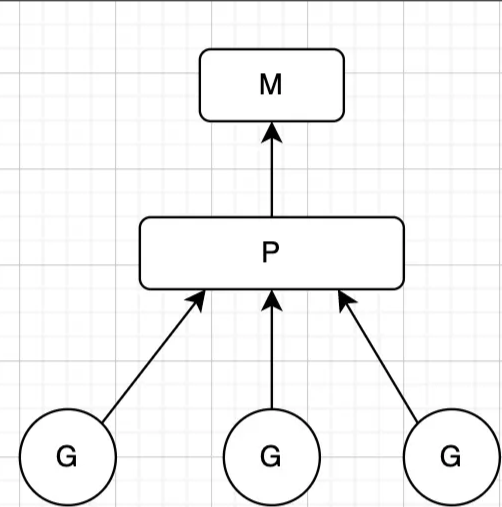golang数组内存分配原理
来源:脚本之家
2023-01-10 09:51:57
0浏览
收藏
本篇文章给大家分享《golang数组内存分配原理》,覆盖了Golang的常见基础知识,其实一个语言的全部知识点一篇文章是不可能说完的,但希望通过这些问题,让读者对自己的掌握程度有一定的认识(B 数),从而弥补自己的不足,更好的掌握它。
编译时数组类型解析
ArrayType
数组是内存中一片连续的区域,在声明时需要指定长度,数组的声明有如下三种方式,[...]的方式在编译时会自动推断长度。
var arr1 [3]int
var arr2 = [3]int{1,2,3}
arr3 := [...]int{1,2,3}
在词法及语法解析时,上述三种方式声明的数组会被解析为ArrayType, 当遇到[...]的声明时,其长度会被标记为nil,将在后续阶段进行自动推断。
// go/src/cmd/compile/internal/syntax/parser.go
func (p *parser) typeOrNil() Expr {
...
pos := p.pos()
switch p.tok {
...
case _Lbrack:
// '[' oexpr ']' ntype
// '[' _DotDotDot ']' ntype
p.next()
if p.got(_Rbrack) {
return p.sliceType(pos)
}
return p.arrayType(pos, nil)
...
}
// "[" has already been consumed, and pos is its position.
// If len != nil it is the already consumed array length.
func (p *parser) arrayType(pos Pos, len Expr) Expr {
...
if len == nil && !p.got(_DotDotDot) {
p.xnest++
len = p.expr()
p.xnest--
}
...
p.want(_Rbrack)
t := new(ArrayType)
t.pos = pos
t.Len = len
t.Elem = p.type_()
return t
}
// go/src/cmd/compile/internal/syntax/nodes.go
type (
...
// [Len]Elem
ArrayType struct {
Len Expr // nil means Len is ...
Elem Expr
expr
}
...
)
types2.Array
在对生成的表达式进行类型检查时,如果是ArrayType类型,且其长度Len为nil时,会初始化一个types2.Array并将其长度标记为-1,然后通过check.indexedElts(e.ElemList, utyp.elem, utyp.len)返回数组长度n并赋值给Len,完成自动推断。
// go/src/cmd/compile/internal/types2/array.go
// An Array represents an array type.
type Array struct {
len int64
elem Type
}
// go/src/cmd/compile/internal/types2/expr.go
// exprInternal contains the core of type checking of expressions.
// Must only be called by rawExpr.
func (check *Checker) exprInternal(x *operand, e syntax.Expr, hint Type) exprKind {
...
switch e := e.(type) {
...
case *syntax.CompositeLit:
var typ, base Type
switch {
case e.Type != nil:
// composite literal type present - use it
// [...]T array types may only appear with composite literals.
// Check for them here so we don't have to handle ... in general.
if atyp, _ := e.Type.(*syntax.ArrayType); atyp != nil && atyp.Len == nil {
// We have an "open" [...]T array type.
// Create a new ArrayType with unknown length (-1)
// and finish setting it up after analyzing the literal.
typ = &Array{len: -1, elem: check.varType(atyp.Elem)}
base = typ
break
}
typ = check.typ(e.Type)
base = typ
...
}
switch utyp := coreType(base).(type) {
...
case *Array:
if utyp.elem == nil {
check.error(e, "illegal cycle in type declaration")
goto Error
}
n := check.indexedElts(e.ElemList, utyp.elem, utyp.len)
// If we have an array of unknown length (usually [...]T arrays, but also
// arrays [n]T where n is invalid) set the length now that we know it and
// record the type for the array (usually done by check.typ which is not
// called for [...]T). We handle [...]T arrays and arrays with invalid
// length the same here because it makes sense to "guess" the length for
// the latter if we have a composite literal; e.g. for [n]int{1, 2, 3}
// where n is invalid for some reason, it seems fair to assume it should
// be 3 (see also Checked.arrayLength and issue #27346).
if utyp.len
<h3>types.Array</h3>
<p>在生成中间结果时,<code>types2.Array</code>最终会通过<code>types.NewArray()</code>转换成<code>types.Array</code>类型。</p>
<pre class="brush:go;">// go/src/cmd/compile/internal/noder/types.go
// typ0 converts a types2.Type to a types.Type, but doesn't do the caching check
// at the top level.
func (g *irgen) typ0(typ types2.Type) *types.Type {
switch typ := typ.(type) {
...
case *types2.Array:
return types.NewArray(g.typ1(typ.Elem()), typ.Len())
...
}
// go/src/cmd/compile/internal/types/type.go
// Array contains Type fields specific to array types.
type Array struct {
Elem *Type // element type
Bound int64 // number of elements;
<h2>编译时数组字面量初始化</h2>
<p>数组类型解析可以得到数组元素的类型<code>Elem</code>以及数组长度<code>Bound</code>,而数组字面量的初始化是在编译时类型检查阶段完成的,通过函数<code>tcComplit -> typecheckarraylit</code>循环字面量分别进行赋值。</p>
<pre class="brush:go;">// go/src/cmd/compile/internal/typecheck/expr.go
func tcCompLit(n *ir.CompLitExpr) (res ir.Node) {
...
t := n.Type()
base.AssertfAt(t != nil, n.Pos(), "missing type in composite literal")
switch t.Kind() {
...
case types.TARRAY:
typecheckarraylit(t.Elem(), t.NumElem(), n.List, "array literal")
n.SetOp(ir.OARRAYLIT)
...
return n
}
// go/src/cmd/compile/internal/typecheck/typecheck.go
// typecheckarraylit type-checks a sequence of slice/array literal elements.
func typecheckarraylit(elemType *types.Type, bound int64, elts []ir.Node, ctx string) int64 {
...
for i, elt := range elts {
ir.SetPos(elt)
r := elts[i]
...
r = Expr(r)
r = AssignConv(r, elemType, ctx)
...
}
编译时数组索引越界检查
在对数组进行索引访问时,如果访问越界在编译时就无法通过检查。
例如:
arr := [...]string{"s1", "s2", "s3"}
e3 := arr[3]
// invalid array index 3 (out of bounds for 3-element array)
数组在类型检查阶段会对访问数组的索引进行验证:
// go/src/cmd/compile/internal/typecheck/typecheck.go
func typecheck1(n ir.Node, top int) ir.Node {
...
switch n.Op() {
...
case ir.OINDEX:
n := n.(*ir.IndexExpr)
return tcIndex(n)
...
}
}
// go/src/cmd/compile/internal/typecheck/expr.go
func tcIndex(n *ir.IndexExpr) ir.Node {
...
l := n.X
n.Index = Expr(n.Index)
r := n.Index
t := l.Type()
...
switch t.Kind() {
...
case types.TSTRING, types.TARRAY, types.TSLICE:
n.Index = indexlit(n.Index)
if t.IsString() {
n.SetType(types.ByteType)
} else {
n.SetType(t.Elem())
}
why := "string"
if t.IsArray() {
why = "array"
} else if t.IsSlice() {
why = "slice"
}
if n.Index.Type() != nil && !n.Index.Type().IsInteger() {
base.Errorf("non-integer %s index %v", why, n.Index)
return n
}
if !n.Bounded() && ir.IsConst(n.Index, constant.Int) {
x := n.Index.Val()
if constant.Sign(x)
<h2>运行时数组内存分配</h2>
<p>数组是内存区域一块连续的存储空间。在运行时会通过<code>mallocgc</code>给数组分配具体的存储空间。<code>newarray</code>中如果数组元素刚好只有一个,则空间大小为元素类型的大小<code>typ.size</code>, 如果有多个元素则内存大小为<code>n*typ.size</code>。但这并不是实际分配的内存大小,实际分配多少内存,取决于<code>mallocgc</code>,涉及到<code>golang</code>的内存分配原理。但可以看到如果待分配的对象不超过<code>32kb</code>,<code>mallocgc</code>会直接将其分配在缓存空间中,如果大于<code>32kb</code>则直接从堆区分配内存空间。</p>
<pre class="brush:go;">// go/src/runtime/malloc.go
// newarray allocates an array of n elements of type typ.
func newarray(typ *_type, n int) unsafe.Pointer {
if n == 1 {
return mallocgc(typ.size, typ, true)
}
mem, overflow := math.MulUintptr(typ.size, uintptr(n))
if overflow || mem > maxAlloc || n 32 kB) are allocated straight from the heap.
func mallocgc(size uintptr, typ *_type, needzero bool) unsafe.Pointer {
...
}
总结
数组在编译阶段最终被解析为types.Array类型,包含元素类型Elem和数组长度Bound
type Array struct {
Elem *Type // element type
Bound int64 // number of elements;
- 如果数组长度未指定,例如使用了语法糖
[...],则会在表达式类型检查时计算出数组长度。 - 数组字面量初始化以及索引越界检查都是在编译时类型检查阶段完成的。
- 在运行时通过
newarray()函数对数组内存进行分配,如果数组大小超过32kb则会直接分配到堆区内存。
今天关于《golang数组内存分配原理》的内容介绍就到此结束,如果有什么疑问或者建议,可以在golang学习网公众号下多多回复交流;文中若有不正之处,也希望回复留言以告知!
版本声明
本文转载于:脚本之家 如有侵犯,请联系study_golang@163.com删除
 golang切片原理详细解析
golang切片原理详细解析
- 上一篇
- golang切片原理详细解析

- 下一篇
- golang协程与线程区别简要介绍
查看更多
最新文章
-

- Golang · Go教程 | 6小时前 | 格式化输出 printf fmt库 格式化动词 Stringer接口
- Golangfmt库用法与格式化技巧解析
- 140浏览 收藏
-

- Golang · Go教程 | 6小时前 |
- Golang配置Protobuf安装教程
- 147浏览 收藏
-

- Golang · Go教程 | 6小时前 |
- Golang中介者模式实现与通信解耦技巧
- 378浏览 收藏
-

- Golang · Go教程 | 7小时前 |
- Golang多协程通信技巧分享
- 255浏览 收藏
-

- Golang · Go教程 | 7小时前 |
- Golang如何判断变量类型?
- 393浏览 收藏
-

- Golang · Go教程 | 7小时前 |
- Golang云原生微服务实战教程
- 310浏览 收藏
-

- Golang · Go教程 | 8小时前 |
- Golang迭代器与懒加载结合应用
- 110浏览 收藏
-

- Golang · Go教程 | 8小时前 | 性能优化 并发安全 Golangslicemap 预设容量 指针拷贝
- Golangslicemap优化技巧分享
- 412浏览 收藏
-

- Golang · Go教程 | 8小时前 |
- Golang代理模式与访问控制实现解析
- 423浏览 收藏
-

- Golang · Go教程 | 8小时前 |
- Golang事件管理模块实现教程
- 274浏览 收藏
查看更多
课程推荐
-

- 前端进阶之JavaScript设计模式
- 设计模式是开发人员在软件开发过程中面临一般问题时的解决方案,代表了最佳的实践。本课程的主打内容包括JS常见设计模式以及具体应用场景,打造一站式知识长龙服务,适合有JS基础的同学学习。
- 543次学习
-

- GO语言核心编程课程
- 本课程采用真实案例,全面具体可落地,从理论到实践,一步一步将GO核心编程技术、编程思想、底层实现融会贯通,使学习者贴近时代脉搏,做IT互联网时代的弄潮儿。
- 516次学习
-

- 简单聊聊mysql8与网络通信
- 如有问题加微信:Le-studyg;在课程中,我们将首先介绍MySQL8的新特性,包括性能优化、安全增强、新数据类型等,帮助学生快速熟悉MySQL8的最新功能。接着,我们将深入解析MySQL的网络通信机制,包括协议、连接管理、数据传输等,让
- 500次学习
-

- JavaScript正则表达式基础与实战
- 在任何一门编程语言中,正则表达式,都是一项重要的知识,它提供了高效的字符串匹配与捕获机制,可以极大的简化程序设计。
- 487次学习
-

- 从零制作响应式网站—Grid布局
- 本系列教程将展示从零制作一个假想的网络科技公司官网,分为导航,轮播,关于我们,成功案例,服务流程,团队介绍,数据部分,公司动态,底部信息等内容区块。网站整体采用CSSGrid布局,支持响应式,有流畅过渡和展现动画。
- 485次学习
查看更多
AI推荐
-

- ChatExcel酷表
- ChatExcel酷表是由北京大学团队打造的Excel聊天机器人,用自然语言操控表格,简化数据处理,告别繁琐操作,提升工作效率!适用于学生、上班族及政府人员。
- 3166次使用
-

- Any绘本
- 探索Any绘本(anypicturebook.com/zh),一款开源免费的AI绘本创作工具,基于Google Gemini与Flux AI模型,让您轻松创作个性化绘本。适用于家庭、教育、创作等多种场景,零门槛,高自由度,技术透明,本地可控。
- 3379次使用
-

- 可赞AI
- 可赞AI,AI驱动的办公可视化智能工具,助您轻松实现文本与可视化元素高效转化。无论是智能文档生成、多格式文本解析,还是一键生成专业图表、脑图、知识卡片,可赞AI都能让信息处理更清晰高效。覆盖数据汇报、会议纪要、内容营销等全场景,大幅提升办公效率,降低专业门槛,是您提升工作效率的得力助手。
- 3408次使用
-

- 星月写作
- 星月写作是国内首款聚焦中文网络小说创作的AI辅助工具,解决网文作者从构思到变现的全流程痛点。AI扫榜、专属模板、全链路适配,助力新人快速上手,资深作者效率倍增。
- 4512次使用
-

- MagicLight
- MagicLight.ai是全球首款叙事驱动型AI动画视频创作平台,专注于解决从故事想法到完整动画的全流程痛点。它通过自研AI模型,保障角色、风格、场景高度一致性,让零动画经验者也能高效产出专业级叙事内容。广泛适用于独立创作者、动画工作室、教育机构及企业营销,助您轻松实现创意落地与商业化。
- 3788次使用
查看更多
相关文章
-
- Goreflect反射原理示例详解
- 2022-12-22 174浏览
-
- 一文带你搞懂Golang结构体内存布局
- 2022-12-22 125浏览
-
- 浅析Golang中的内存逃逸
- 2022-12-22 344浏览
-
- 一文搞懂Golang中的内存逃逸
- 2022-12-31 378浏览
-
- go熔断原理分析与源码解读
- 2022-12-30 442浏览





